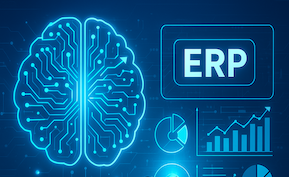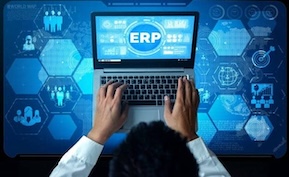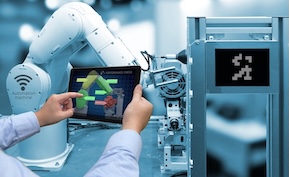Digital Twin Integration: Mirroring the Factory Floor with Manufacturing ERP
Digital twin technology is transforming how manufacturers design, monitor, and optimize their operations. By creating a virtual replica of physical assets, processes, or entire facilities, manufacturers gain the ability to simulate real-world scenarios and predict outcomes with remarkable accuracy. When integrated with manufacturing ERP systems, digital twins bridge the gap between operational execution and strategic decision-making, enabling a truly data-driven manufacturing ecosystem.
What is a digital twin in manufacturing
A digital twin is a dynamic, digital representation of a physical asset or process. It continuously synchronizes with real-world data through sensors, IoT devices, and automation systems. This connection allows the digital model to reflect current operating conditions and simulate potential future states. In manufacturing, digital twins can represent anything from a single machine to an entire production line, providing visibility that was once impossible through traditional monitoring tools.
How digital twins enhance ERP systems
ERP systems have long served as the backbone of manufacturing operations, managing data on materials, production schedules, and costs. However, ERP platforms typically rely on transactional data that updates periodically. By integrating digital twins, manufacturers can complement ERP’s planning and reporting functions with real-time operational intelligence. This integration creates a continuous feedback loop between physical operations and business planning, improving accuracy, agility, and performance.
Connecting the factory floor to the digital model
Integration begins with IoT sensors and machine connectivity. These devices capture performance data—such as temperature, vibration, and energy usage—and feed it into both the ERP and the digital twin. The twin processes this data to detect deviations, test responses, and optimize parameters before changes are implemented on the factory floor. The ERP then updates inventory, labor, and cost data automatically, keeping financial and operational metrics perfectly aligned.
Use cases for digital twin integration
Digital twin integration supports a range of high-value manufacturing applications. Production planners use it to model capacity and evaluate scheduling alternatives before committing to a plan. Maintenance teams simulate wear and failure patterns to schedule proactive repairs. Engineers test design changes virtually, reducing the need for physical prototypes. Quality teams replicate production conditions digitally to trace defects and optimize process parameters for consistency and yield.
Predictive and prescriptive analytics
Digital twins enable both predictive and prescriptive analytics by combining historical and real-time data. Machine learning algorithms analyze trends to forecast potential equipment failures or process inefficiencies. When issues are detected, prescriptive analytics recommends corrective actions—such as adjusting production speed or rerouting materials—to maintain performance. These insights feed directly into the ERP system, ensuring that decision-making remains synchronized across engineering, operations, and finance.
Benefits of ERP-integrated digital twins
When ERP and digital twin systems work together, manufacturers gain a unified view of performance across business and production layers. Key benefits include shorter product development cycles, faster response to disruptions, and greater operational efficiency. Decision-makers can test multiple scenarios before executing changes, reducing risk and improving outcomes. Financial forecasting also becomes more accurate as ERP data reflects real-time operational conditions rather than historical estimates.
Overcoming integration challenges
Integrating digital twins with ERP systems requires strong data infrastructure and standardized communication protocols. Many manufacturers face challenges related to siloed systems, inconsistent data formats, or limited sensor coverage. A phased approach—starting with a single line or asset—allows teams to validate connectivity and refine models before scaling. Cloud-based integration platforms and open APIs make it easier to connect existing ERP systems with digital twin technology without extensive reengineering.
Driving continuous improvement
Digital twin integration supports continuous improvement by turning data into actionable insight. As the system collects more information over time, its simulations become increasingly accurate. Manufacturers can identify root causes faster, test process enhancements virtually, and implement verified improvements with confidence. This iterative cycle helps organizations achieve higher levels of efficiency, sustainability, and innovation.
The future of digital twin-driven manufacturing
As AI and cloud computing continue to advance, digital twins will evolve into fully autonomous systems capable of self-optimization. Future ERP platforms will likely include native digital twin capabilities, providing real-time simulation and predictive control as standard features. Manufacturers that embrace this integration today will gain a competitive advantage by transforming their operations into intelligent, adaptive systems built for the future of smart manufacturing.
The takeaway
Digital twin integration marks a major step forward in manufacturing software evolution. By connecting ERP systems to real-time virtual models of operations, manufacturers gain unprecedented visibility and control. This combination of physical and digital intelligence enables faster decision-making, reduced downtime, and continuous improvement. In the era of smart manufacturing, digital twins are not just tools—they are strategic assets driving the next generation of industrial innovation.







